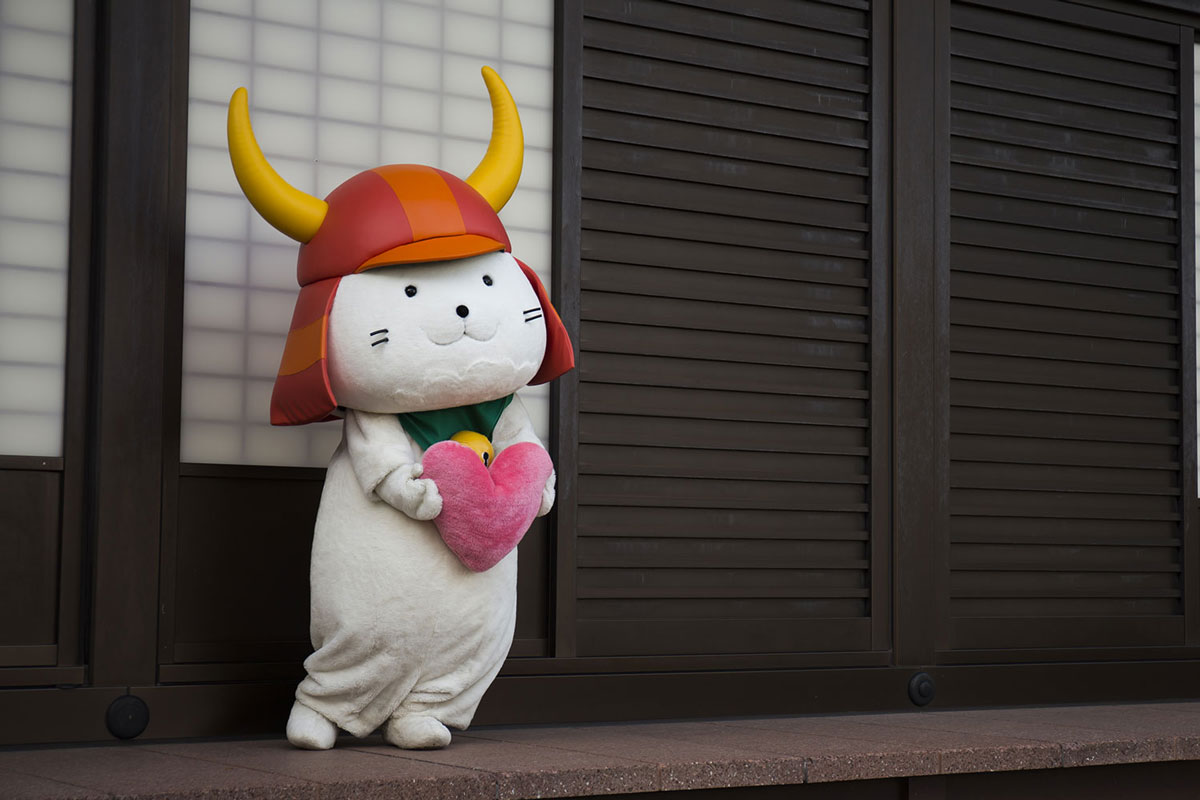

YURU-KYARA – THEP PHENOMENON OF GIANT MASCOTS
What are yuru-kyara?
Yuru-kyara (ゆるキャラ – loose mascot character) are the most recognisable mascots in Japan. They are used to promote regional events, businesses or products but at a much bigger scale than this takes place in Europe. Japanese fluffy giants also have their own blogs, shows or Facebook profiles. Their images can be found on many gadgets – from their mini versions, through pens to clothes.
Yuru-kyara Hikonyan is believed to be the first giant mascot. It is a large white teddy bear wearing a Viking helmet. It was invented in 2007 for a castle campaign in Hikone. The mascot initially accosted passers-by and tourists to interact with them and take pictures. It later turned out that after it had been introduced, the number of visitors grew by about 200,000. This also contributed to the increase of profit from the tourist and economic sector in the region.
Yuru-kyara Grand Prix
Many Japanese companies and cities noticed the tremendous marketing potential of yuru-kyara. Numerous mascot types and images started to emerge. Dozens of variants could be met in one city district. With the growing interest in yuru-kyara people no longer new which mascot represented what. This gave rise to a concept of fluffy characters competing with one another, which culminated in the first Yuru-Kyara Grand Prix in 2010. During the now annual event, the fans of fictional characters cast even 50 million votes in online poll and physical ballot. Every tournament attracts over 1,5 candidates.
The most interesting yuru-kyara
Every mascot needs its own story, character and hobby. The mascot of the Japanese Ministry of Health Kenketsu-chan (blood donation girl) has her favourite pastime too. It is helping others and promoting blood donation. This is why it works with many blood donation centres. The Noppon brothers, representing the Tokyo Tower, which was inspired by the Eiffel Tower, are another interesting example. Two funny men with tear-shaped heads and dungarees resembling those of Mario and Luigi green the guests at the entrance. The younger of the brothers, the one wearing red, is said to be more cheerful than the one in blue.
The most famous mascot is teddy Kumamon. It is a brand hero of a prefecture of the same name. The dark brown teddy with the characteristic flushed cheeks is recognisable not only in the region but all across Japan and beyond. Gadgets and clothes with its image can be bought both in the Country of Cherry Blossoms and in Europe or America.
Each of 47 Japanese police departments has its own mascot. Pepo-kun is a yuru-kyara representing the Tokyo law enforcement. The cute squirrel-mouse is featured on many materials of the Tokyo PD. It has large eyes to notice any trouble and danger and long ears to hear any calls for help. Besides, it is present at various safety workshops and training sessions for children, teenagers and adults.
Designing yuru-kyara
Depending on the material and the popularity of the very concept of mascots, the price can reach even a thousand euros or more. Yuru-kyara are often designed by laymen, local activists and local government employees. True, some are specifically created by professional designers. But the majority of mascots are developed without any well-planned concept. Many PR specialists believe that this is where the success of those fictional characters comes from. All Japanese can participate in the process of their creation. The simple workmanship is the reason behind the emotional attachment to yuru-kyara.
The basis of the yuru-kyara identity
It is currently impossible to remember all the yuru-kyara created to date. Still, each one should meet three specific criteria. First, it should be passionate about its region, product or company. This is visible in an element typical of its representation incorporated in its appearance. Secondly, a mascot should have its individual moves that cannot be imitated by man, and especially by another mascot. Thirdly, as the name suggests, it must be yuru, i.e. laid-back but also cute and approach people and the world with love.














